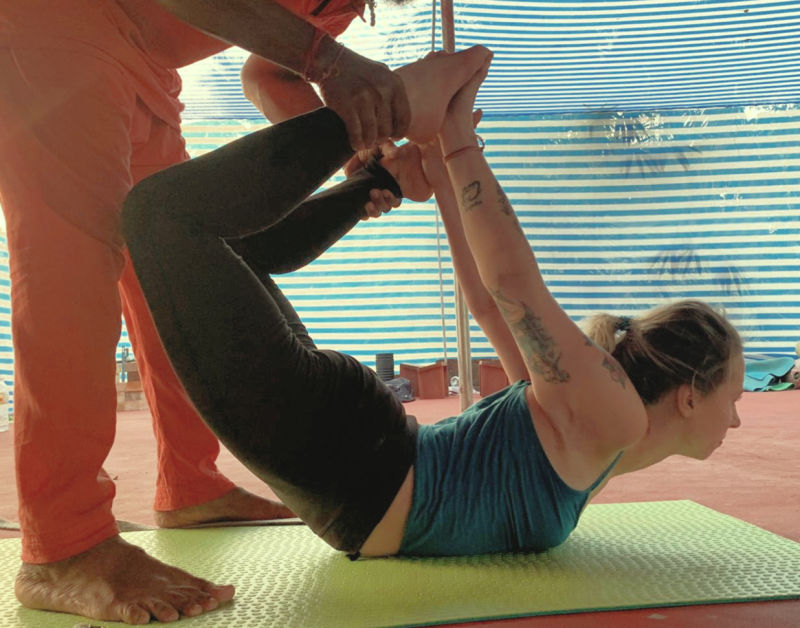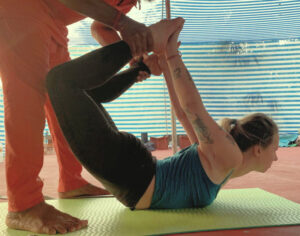Personal trainers can incorporate yoga into a fitness program and more easily navigate the many asanas (yoga poses) by studying the history and essence of this age-old practice. It may seem overwhelming, so let’s start with the basics!
What are the essential properties of Yoga and what does the most commonly known practice of Asana look like today? How can a fitness professional incorporate yoga into a program?
Yoga as a practice is a much broader concept than the physical practice you might be familiar with. At Yoga’s roots, it is a path or lifestyle to find the ultimate freedom, often referred to as enlightenment.
Most texts claim yoga to be at least 5,000 years old, and still, there is speculation that it goes back even further. It is said there was an Asana for every being on earth, thus the intangible total of 8.4 million. However, that was whittled down for us mere mortals to only 84.
There are five main branches of Yoga:
- Bhakti Yoga: the life of devotion and unconditional love
- Jnana Yoga: the path of wisdom and knowledge
- Karma Yoga: the life of selfless actions
- Hatha Yoga: this path consists of 6 “steps” to reach the ultimate freedom: Asana, shat Kriyas (six cleansing techniques), pranayama, bandhas (physical locks of the body to redirect and channel energy), and Samadhi
- Raja Yoga: the “Royal path” consisting of eight limbs to clean and train the body and mind in preparation for meditation.
These last two branches are the most familiar to the westerners. The Asana styles most commonly seen in Yoga studios are Hatha and Ashtanga Vinyasa.
The Third Limb of Raja
You may have heard a yoga practitioner refer to their yoga class as an “Asana class”. What most of the western world calls “Yoga” is only one of the eight limbs of Raja Yoga known as Asana. Traditionally Raja Yoga is a lifestyle–a distinctly outlined practice to prepare oneself to reach the ultimate enlightenment: Samadhi.
The eight limbs of Raja Yoga are:
1. Yama – moral code/ethics; how one interacts with others
2. Niyama – Self-Discipline; how one interacts with themselves
3. Asana – physical practice (the most well-known branch to the western world) Asana is Sanskrit for “pose”
4. Pranayama – breath work/energy work
5. Pratyahara – withdrawal of the senses and from the external world
6. Dharana – concentration and focus (preparation for meditation)
7. Dhyana – meditation
8. Samadhi – enlightenment
Each of these branches contains a plethora of knowledge and information, but for this blog, I will only be delving into Asana.
What is Asana?
The third branch, Asana, is intended to prepare the physical body for the deeper practices of Pranayama and Meditation. These two practices require the Yogi to remain in a proper seated posture for extended periods of time. Sukhasana, “Easy Pose” (cross-legged) or Padmasana, ”Lotus Pose” (where both the feet are resting on top of the upper thighs).
Neither of the poses is “easy” to maintain. This is where the third branch of Asana comes in. The Asanas are practiced to make the body supple and healthy, and able to maintain the seated postures comfortably and easily.
Some continue to follow the eight branches to reach enlightenment, but this is not as common with Asana practice in the West.
In modern times Asana practice is appreciated for the many health and physical benefits it provides. This includes reducing stress and anxiety, stimulating and balancing the endocrine and nervous systems, improving balance and range of motion, promoting joint health, and cultivating body awareness. Asana practice can be a tremendous tool in supplementing a lifestyle of wellness.




